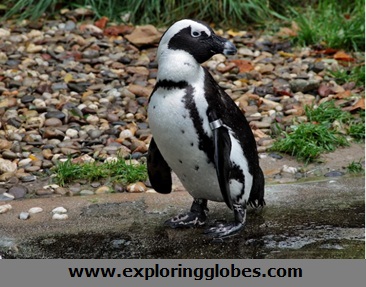ANTARCTICA
All You Need to Know About Continents : Antarctica

Facts about Antarctica
- By population, Antarctica is the smallest continent. As a result, the vast continent is only sparsely populated.
• On Antarctica, there are only temporary research stations for scientists, and the land is almost entirely covered by ice.
- This continent, which accounts for 60% to 70% of the world’s freshwater supply, is home to 90% of the planet’s ice.
• 75% of the world’s ice and 70% of the planet’s fresh water are found in Antarctica, making it not only the coldest spot on Earth, but also the highest, driest, windiest, and emptiest.
- The White Continent or the Ice Continent are other names for it. Antarctica was referred to as “Terra Australis Incognita” prior to 1840, which was Latin for “the undiscovered southern land.”
• In Antarctica, the winter months of late March to late September are completely dark during the day, while the summer months of December to February provide 24 hours of light.
• The Ice Continent has summertime lows of roughly -35 degrees Celsius in the interior and 2 degrees Celsius in its coasts. In the winter, the interior registers -70 degrees Celsius while the beaches register 2 degrees.
• At -89 degrees Celsius, Antarctica was the lowest natural temperature ever measured on Earth.
• As a result of these significant temperature swings, the creation of ice along Antarctica’s periphery makes the continent’s wintertime area approximately 14.2 million square kilometers bigger than its summertime area.
• There are no time zones on this continent, and nothing can rot in the frigid waters of Antarctica.
- The Belgica Antarctica bug, which has a length of 1.3 cm, is the largest land animal in Antarctica.
• Penguins call Antarctica home, and Adelie penguins are the most prevalent species here. The only permanent populations in Antarctica are the research bases where experts from many nations come to work.
The Antarctic Circle is shown on the map, and Antarctica is the fifth-largest continent by area after Asia, Africa, North America, and South America. Antarctica has a land area of 14 million km2, of which 280,000 km2 are ice-free and 13.72 million km2 are covered in ice.
The South Pole, which is customarily the southernmost point on Earth’s surface, is not nearly in the centre of Antarctica (wherever you would go from here you would go north, somehow).
One of the ends of the Earth’s rotation axis is the South Pole. Because Earth rotates slightly off-center, the South Pole is not actually a fixed location.
Scientists refer to this phenomenon as the Polar Motion; it is the movement of Earth’s rotational axis over its “surface,” and the deviation is only a few metres.
South Africa, Australia, New Zealand, Chile, and Argentina are the nations that are closest to Antarctica.
There are no towns or communities on Antarctica because ice blankets 98% of the land.
The map also identifies the locations of scientific research facilities run by several nations across the continent.

-

 ASIA3 years ago
ASIA3 years agoAll You Need to Know About Continents : ASIA
-

 WORLD INFO3 years ago
WORLD INFO3 years agoAll You Need to Know About Continents: Facts and More
-

 AFRICA3 years ago
AFRICA3 years agoAll You Need to Know About Continents : AFRICA
-

 AUSTRALIA3 years ago
AUSTRALIA3 years agoAll You Need to Know About Continents : Australia
-

 WORLD INFO3 years ago
WORLD INFO3 years agoThe World’s Oceans
-

 AMERICAS3 years ago
AMERICAS3 years agoAll You Need to Know About Continent : THE AMERICAS
-

 EUROPE3 years ago
EUROPE3 years agoAll You Need to Know About Continents : EUROPE

